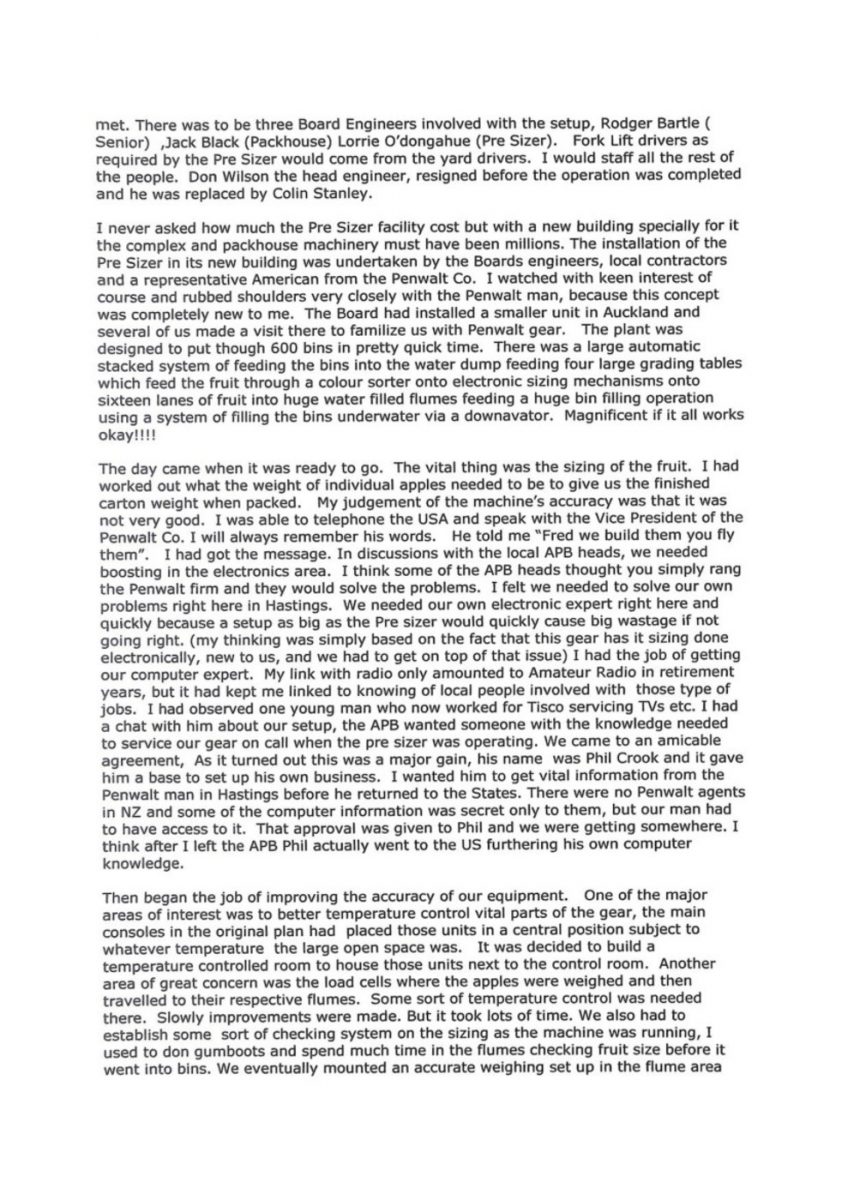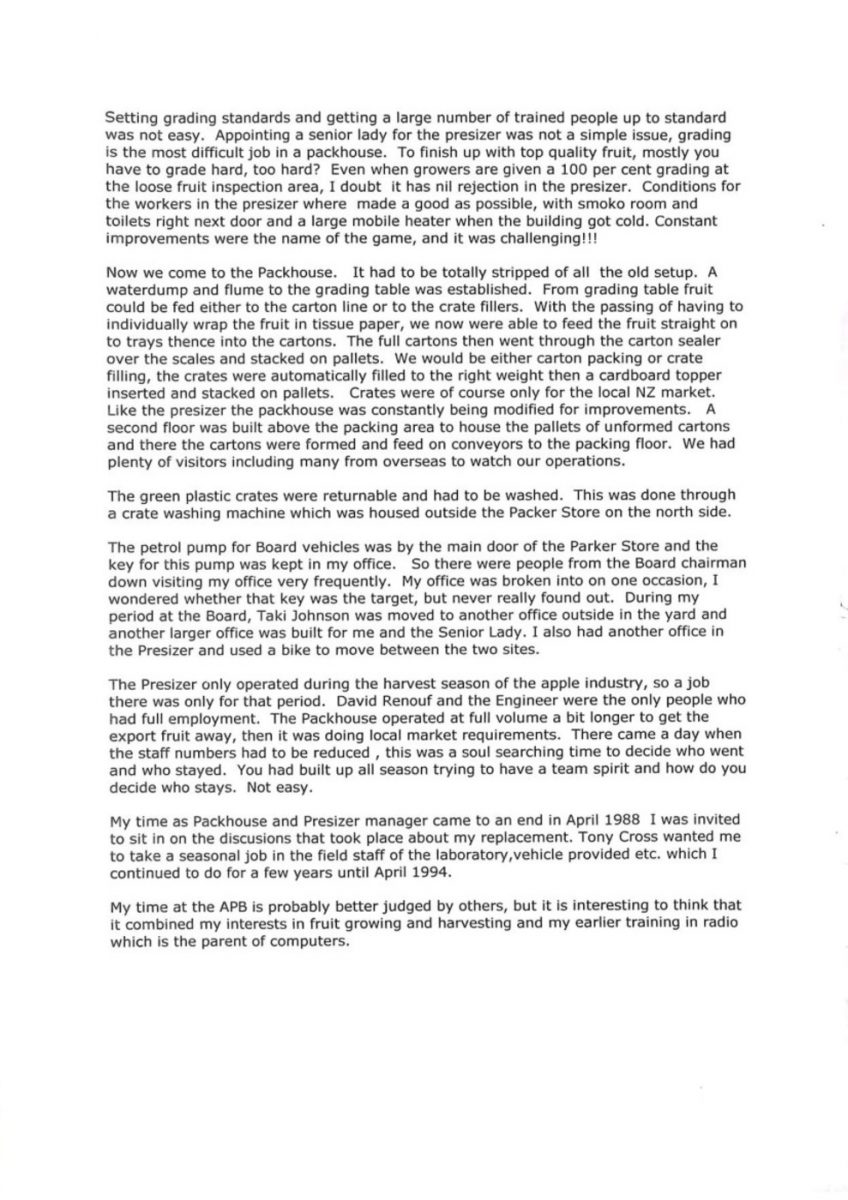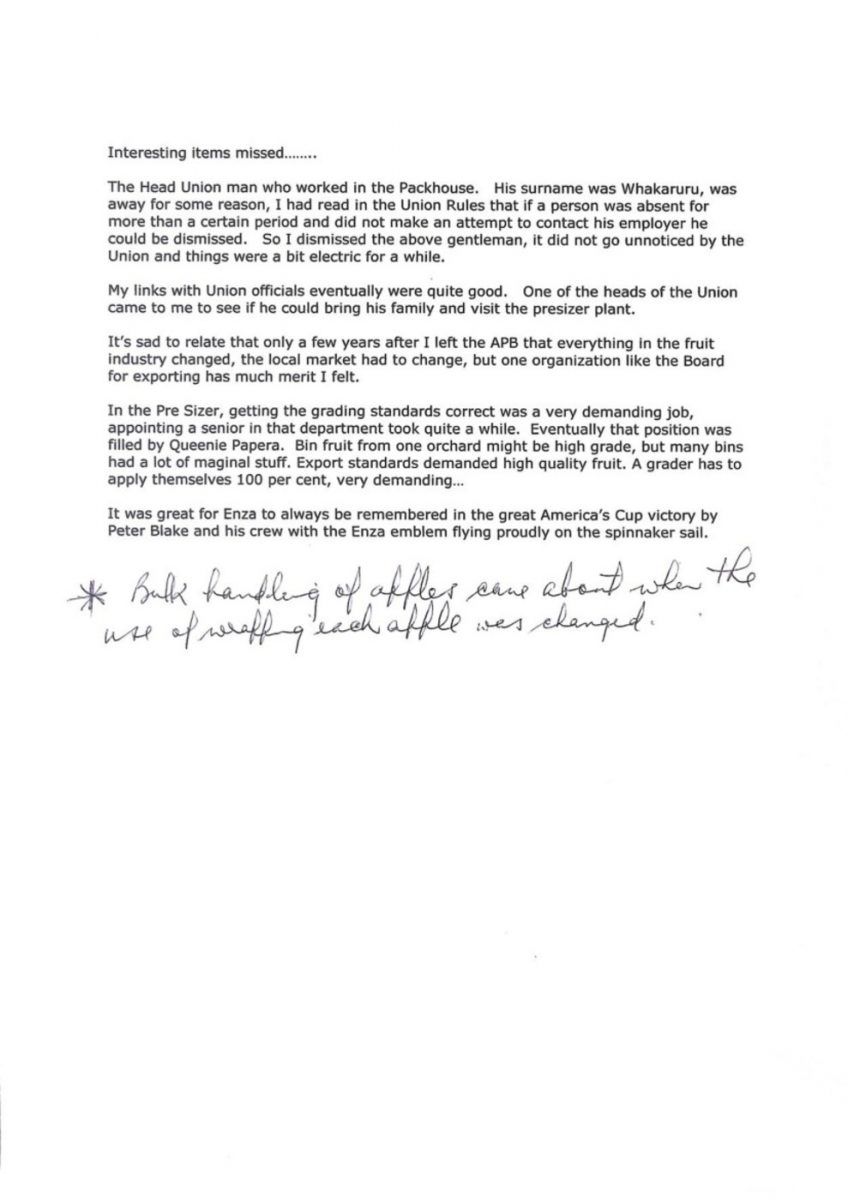At the Apple & Pear Board (Enza)
In 1981 we had moved to Havelock North after selling our orchard. I needed something to do and the APB advertised for a Packhouse Manager. Many thought I was going out of the frying pan into the fire. I went to the Board Office, can’t remember if it was Tony Cross or Mike Gay, anyway I got the job.
The packhouse was in the Parker Building with coolstores very handy. My office was very small adjacent to a larger office used by the outside boss, Taki Johnson. I intended to interview and hire my own staff. The packhouse had been in operation for some years and there was talk that it was going to be replaced. Fruit from the coolstores was carted by electric forklifts to a waterdump thence past a grading table onto the sizer and onto large circular rotating tables. Packers wrapped the fruit into cartons placed them on a conveyor which fed a lidding machine and then manually stacked on pallets and carted to coolstore. All pretty conventional. From memory there would have been fifteen to twenty people involved. Many had been working in the packhouse for some years. I soon found out that Taki had a lot of influence in the packhouse, the staff included a lot of his relatives, his mother-in-law, his daughter, sister, and others.
On the very first day of operations, I was watching how things were going, a pretty young maori girl called Luana seemed to be aimlessly wandering about, I asked her what her job was and she said she was a packer, I immediately invited her to take her place as a packer. The next thing that seemed odd to me was that at the first lunch break the place smelt like a dining room. I discovered that the bloke looking after the lidding machine (Harry) had a hot plate plugged in with his vegetables boiling away nicely, whether he had prepared them during the morning I don’t know, the APB did not seem to have any control over their own setup. The quality and weight of the finished product interested me. There was plenty to think about in this setup. There was a timeclock which recorded everybody’s arrival and departure, a smoko room, a very helpful tea lady (Barbara Oppett), and toilets right on the job. The APB accepted lots of bins of loose fruit and that was the fruit we would pack both for export and local market. The place needed some new blood and some of the existing people needed to wake their ideas up or else!!!! The first area was the grading table, we had to get the grades right, graders had a difficult job and the bins varied greatly. Among the men, it seemed the old hands had the easier jobs and the newer men did the more physical work. I wanted to change that, they needed to be able to do one another’s jobs, then if someone was missing you could more readily fill in. Among the men I had the head Union man for the whole APB .There were engineers available to fix machinery if it broke down.
Slowly changes were made. The lidder man had resigned, I had employed some new labour, appointed a Senior Lady (Mary Whatarau) which proved a great help. I had the services of the engineers and one in particular (Charlie Sutherland ) helped me to get the sizing part of the old grader a bit better. I think everybody knew the packhouse had a new boss and it was not Taki Johnson.
*No longer had to wrap each apple [handwritten]
In the early I980’s news came through that Don Wilson (Chief Engineer of the Apple & Pear Board) had purchased new equipment for the Hastings Branch. It was to be built around the concept of a large sizer plant enabling the packhouse to pack presized fruit. The position of Manager of both plants was advertised in the local paper, maybe elsewhere as well, I am not sure. I did not apply, Tony Cross (local Manager) contacted me as the applications were closing to say my name was not in his list, I then sort of knew that if I applied I would get the job. I was in my sixties (35 to 45 age group preferred in job advert) and knew there probably would be plenty of problems with the new equipment. The new sizing plant was manufactured by the Penwalt Corporation in California, and was to be computer controlled. The foreman of the Pre Sizer was appointed by the Board, he was David Renouf, a person I did not know and had never















Do you know something about this record?
Please note we cannot verify the accuracy of any information posted by the community.